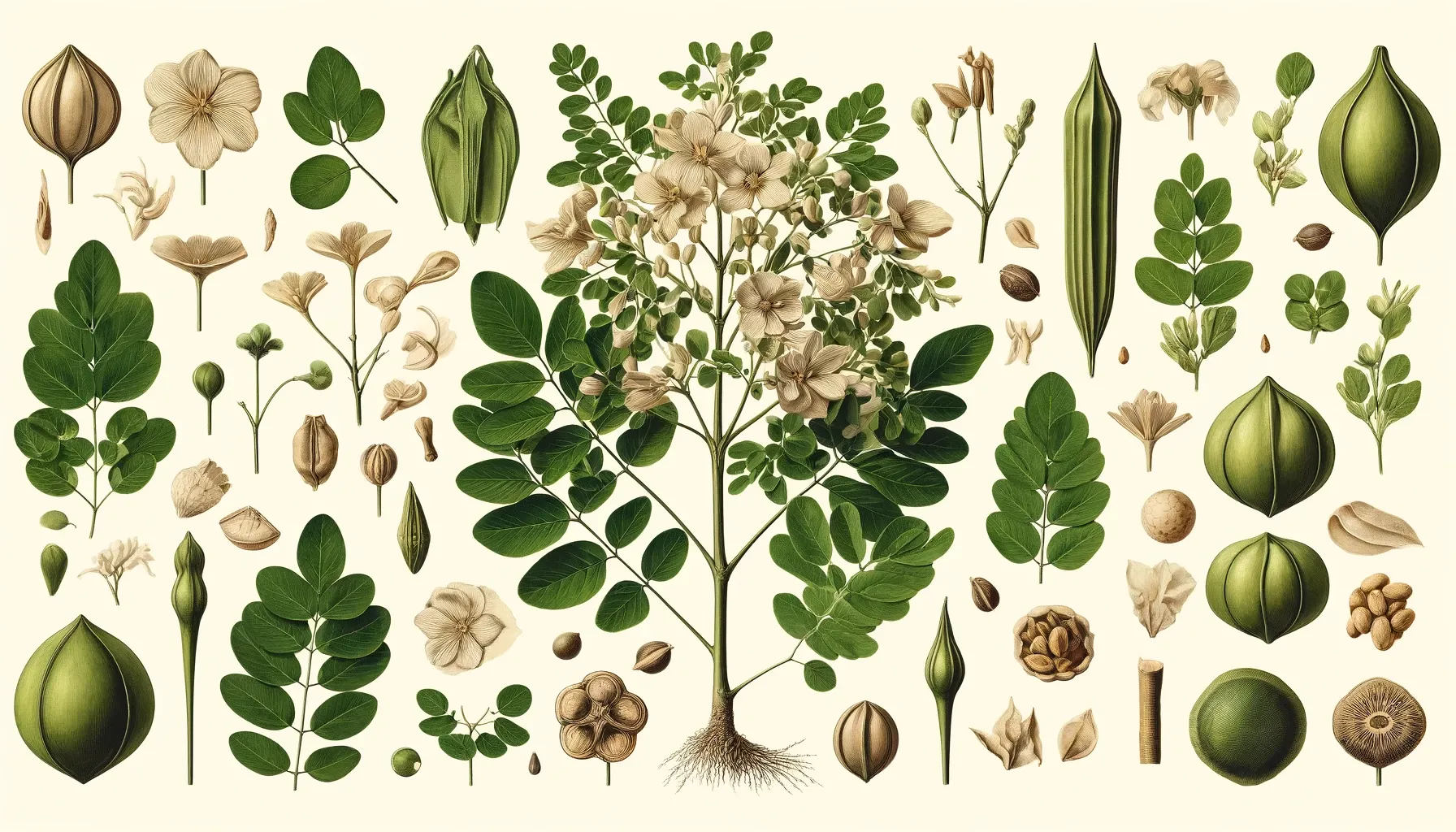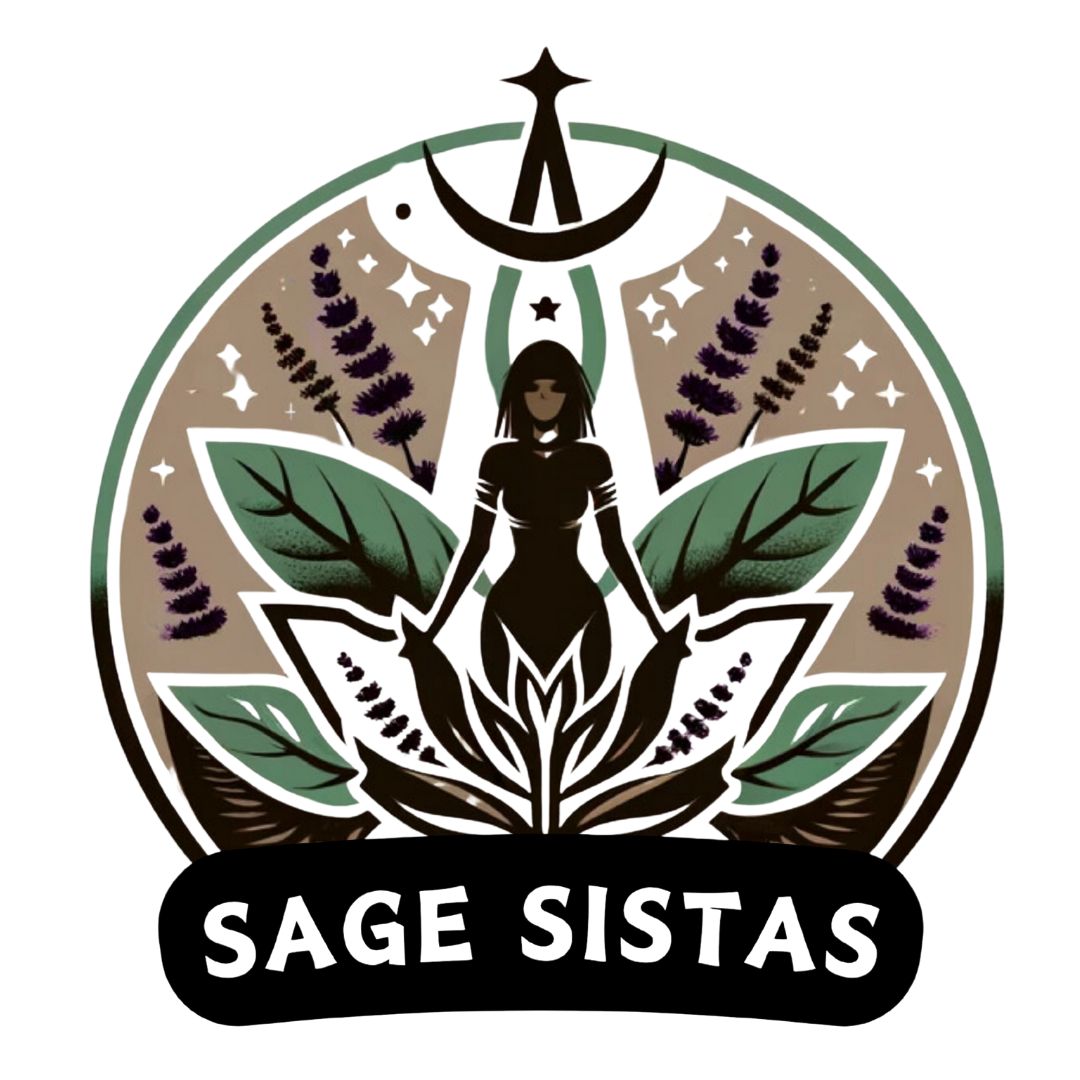Moringa - "Miracle Tree"
| Attribute | Details |
|---|---|
| Genus and Species | Moringa Oleifera |
| Common Names | Drumstick tree, Horseradish tree, Ben oil tree, Miracle tree, Marongay (Filipino) |
| Parts Used | Leaves, pods, seeds, roots, bark, flowers |
| Preparation of Herb | Leaves: Fresh, cooked, dried & powdered. Pods: Cooked. Seeds: Raw, peeled, pressed for oil. Roots: Tea. Bark: Medicinal. |
| Organ Affinity | Liver, kidneys, digestive system |
| Energetics | Cooling, invigorating, energizing, detoxifying |
| Plant Spirit Characteristics | Nurturing, protective, vitality |
| Constituents | Vitamins A, C, E; calcium; potassium; proteins; antioxidants like moringine, beta-sitosterol, quercetin |
| Physical Characteristics | Small, slender tree; tripinnate leaves; fragrant white flowers; long thin green pods; seeds rich in oil; roots & bark with medicinal properties; leaves with unique spicy flavor |
| Preferred Growing Location | Thrives in tropical, subtropical, and arid climates; grows well in depleted soils; native to Africa, Asia, South America |
| Traditional Use | Combat malnutrition; enhance lactation; treat diabetes, high blood pressure, inflammation |
| Harvesting Frequency | Twice a week all year round; abundant harvest |
| Nutritional and Medicinal Uses | Rich in vitamins, minerals, and antioxidants; all parts usable (roots, stem, leaves, flowers, pods); consumed for energy, vitality, and medicinal benefits |
| Global Adoption | Widely used in Africa, South Asia, South America, and Central America; integrated into local diets and healthcare practices; transcends cultural and geographical boundaries |
| Utility Beyond Nutrition | Seeds produce oil for cooking, cosmetics, and water purification; leaves used in water filtration; trunk bark has medicinal properties; embodies sustainability and resourcefulness |
| Scientific Validation | Recognized for high vitamin content, particularly vitamin A; studied for its antioxidant properties and potential in preventing chronic diseases |
| Amino Acid Profile | Contains 18 of the 20 amino acids, including all nine essential amino acids; optimal ratio for absorption and bioavailability; valuable protein source |
| Impact on Malnutrition | Recognized as a potent tool in combating malnutrition; efforts to promote Moringa adoption in developing regions for its nutritional density and accessibility |
| Mainstream Integration | Increasingly recognized as a superfood beyond ethnic cuisines; represents a shift towards healthier, nutrient-rich dietary choices |
| Folklore/Story | Known as "tree of life"; Nebidai in Senegal; symbol of resilience |
| Planet Association | Linked to Mars; symbolizes strength, vitality |
| Magick Spells | Used in spells for health, protection, energy |
Moringa Folklore Stories
Moringa Oleifera, commonly known as the "Miracle Tree," is celebrated worldwide for its extraordinary nutritional and medicinal properties. Thriving in tropical and subtropical regions, including arid zones and depleted soils, Moringa is a resilient plant with an ability to combat malnutrition across the globe. Every part of this versatile tree, from its leaves and seeds to its roots and bark, is edible and packed with vitamins, minerals, and antioxidants. It's a natural powerhouse, offering profound benefits for the liver, kidneys, and digestive system, while also bolstering the immune system and aiding in detoxification. Renowned for its rapid growth and minimal water needs, Moringa is not just a food source but a cornerstone in sustainable agriculture and holistic health practices.

Moringa (Moringa Oleifera) Profile
| Attribute | Details |
|---|---|
| Genus and Species | Moringa Oleifera |
| Common Names | Drumstick tree, Horseradish tree, Ben oil tree, Miracle tree, Marongay (Filipino) |
| Parts Used | Leaves, pods, seeds, roots, bark, flowers |
| Preparation of Herb | Leaves: Fresh, cooked, dried & powdered. Pods: Cooked. Seeds: Raw, peeled, pressed for oil. Roots: Tea. Bark: Medicinal. |
| Organ Affinity | Liver, kidneys, digestive system |
| Energetics | Cooling, invigorating, energizing, detoxifying |
| Plant Spirit Characteristics | Nurturing, protective, vitality |
| Constituents | Vitamins A, C, E; calcium; potassium; proteins; antioxidants like moringine, beta-sitosterol, quercetin |
| Physical Characteristics | Small, slender tree; tripinnate leaves; fragrant white flowers; long thin green pods; seeds rich in oil; roots & bark with medicinal properties; leaves with unique spicy flavor |
| Preferred Growing Location | Thrives in tropical, subtropical, and arid climates; grows well in depleted soils; native to Africa, Asia, South America |
| Traditional Use | Combat malnutrition; enhance lactation; treat diabetes, high blood pressure, inflammation |
| Harvesting Frequency | Twice a week all year round; abundant harvest |
| Nutritional and Medicinal Uses | Rich in vitamins, minerals, and antioxidants; all parts usable (roots, stem, leaves, flowers, pods); consumed for energy, vitality, and medicinal benefits |
| Global Adoption | Widely used in Africa, South Asia, South America, and Central America; integrated into local diets and healthcare practices; transcends cultural and geographical boundaries |
| Utility Beyond Nutrition | Seeds produce oil for cooking, cosmetics, and water purification; leaves used in water filtration; trunk bark has medicinal properties; embodies sustainability and resourcefulness |
| Scientific Validation | Recognized for high vitamin content, particularly vitamin A; studied for its antioxidant properties and potential in preventing chronic diseases |
| Amino Acid Profile | Contains 18 of the 20 amino acids, including all nine essential amino acids; optimal ratio for absorption and bioavailability; valuable protein source |
| Impact on Malnutrition | Recognized as a potent tool in combating malnutrition; efforts to promote Moringa adoption in developing regions for its nutritional density and accessibility |
| Mainstream Integration | Increasingly recognized as a superfood beyond ethnic cuisines; represents a shift towards healthier, nutrient-rich dietary choices |
| Folklore/Story | Known as "tree of life"; Nebidai in Senegal; symbol of resilience |
| Planet Association | Linked to Mars; symbolizes strength, vitality |
| Magick Spells | Used in spells for health, protection, energy |
